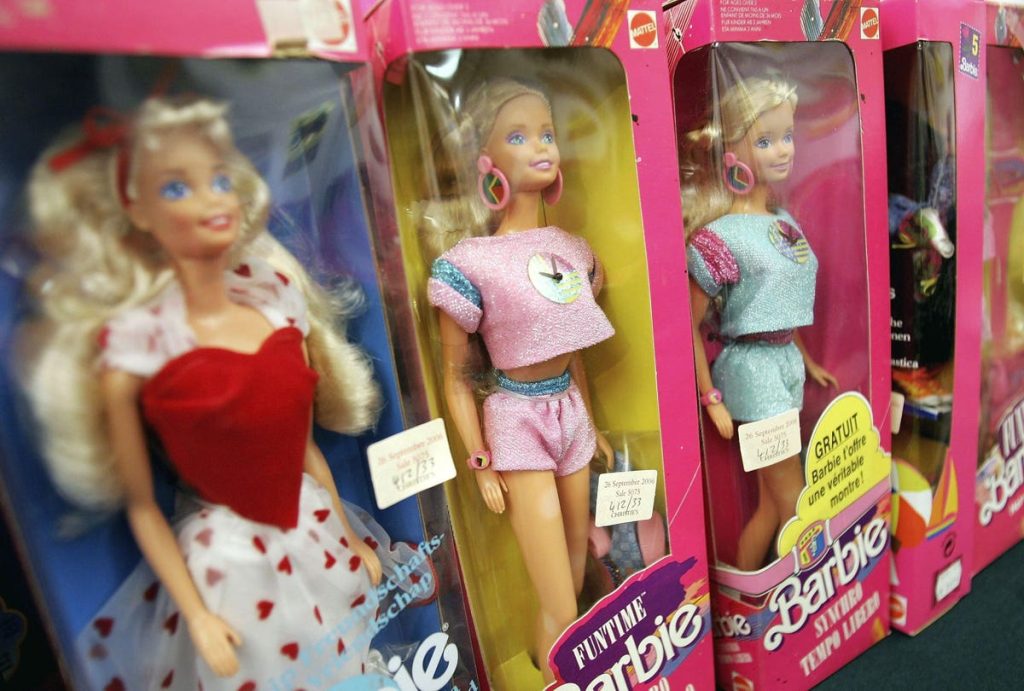With the live-action “Barbie” movie approaching its release date, Barbie seems to be on the tip of everyone’s tongue. For many millennials, Barbie dolls were an iconic staple of their childhood. But the Barbie nostalgia may not translate for the younger generations that have now become Barbie’s target audience. A 2019 article from the Washington Post stated that “Barbie has also lost some of her cultural relevance due to generational politics.”
The best-selling Barbie, the Totally Hair Barbie, was released in 1992. Barbie’s prime demographic, at that time, were millennials. For many in this generation, Barbie’s prototypic whiteness, blondness, and ultra-thin body shape wasn’t initially a deterrent. As time has gone on though, many have argued that Barbie promotes unrealistic and unattainable standards of beauty. One 2016 study even found that Barbie doll exposure could have deleterious effects on the body satisfaction of girls aged 6-8 years old.
“I loved playing Barbies as a kid,” shared attorney Ta’lor Murray, who reflected on her experiences as a Black millennial growing up with Barbie. “I loved all the different outfits and accessories. Me and my sister would play for hours with them. I never had too many Black Barbies just because they were not really prevalent when I was growing up.”
Filipino-American and Zillennial, Gelainna Valera, who is a registered nurse, shared that she enjoyed playing with Barbie dolls in her youth. “I [had] a Barbie that [looked] similar to me but it was more of an Eastern Asian Barbie…I think her name was Kira. It wasn’t until the early 2000s that I was actually able to collect more Asian/Pacific Islander Barbies with darker skin tones.”
“I loved Barbie growing up as a boy who wasn’t sure of his sexuality,” shared Carlos Martinez, who is a communications manager at a consumer-packaged-goods company. Martinez emphasized the role that Barbie played in shaping his identity as a Mexican-American coming of age. “I loved dressing Barbie, making her furniture, making new rooms for her. Growing up in the 90s, Barbies were very much a ‘girl toy.’ A boy playing with a Barbie…would be deemed as ‘gay.’ It’s a tough position to be in as a child. Barbie was a part of the fabric of the girls in my family, not the guys.”
Martinez also noted, “Barbies were mostly, if not all white. No Hispanic Barbies or Kens. Ken was white, Barbie was white.” Despite what an important fixture Barbie was for many millennials, it wasn’t until 2016 that Barbie’s parent company, Mattel, introduced Barbie dolls of varying body types, skin tones, eye colors and hairstyles. “I surely didn’t see myself in Barbie or Ken,” revealed Martinez. “I struggled understanding Barbie or Ken’s proportions as well—like what did they do to get those bodies?”
“My sister and I played with my cousin’s Barbies every chance [we] could,” shared Iris G. Santiago. Santiago, who is Puerto Rican and works as a manager at a telemedicine company, shared the vivid memories she had with Barbie and the feeling of inclusion she felt when she saw a Barbie that looked like her. “[The Teresa Barbie] was my favorite because she looked more like me. I can’t believe I’m saying that now, but I do remember thinking that…she was brown and had brown hair.”
Many millennials may have turned to American Girl dolls because of the lack of diversity seen among Barbie dolls. When assessing both brands, one research article noted “sometimes called ‘the Anti-Barbie’ for moving beyond tired stereotypes by looking ‘normal’ and ‘real’, American Girl is distinct from Barbie even though they are owned by the same company and both are critical to the early development of children.” Despite the success and popularity of American Girl dolls, their price point, which is reported to have been $82 in the 1990s, may have been a major barrier. Reflecting on American Girl dolls, Valera shared “they always had more variety but were so expensive.”
As the United States becomes more diverse, consumer desires will trend toward that direction. For brands that want to remain relevant, inclusive design will be an integral ingredient for sustainability and success. Unlike millennials, Generation Alpha and subsequent generations will have a wider selection of dolls to choose from with a plethora of hairstyles, skin tones, and body types. The impact and influence of the Barbie brand is hard to deny. But Barbie’s staying power relies heavily on the brand’s ability to continue to adapt with the times.
Read the full article here









